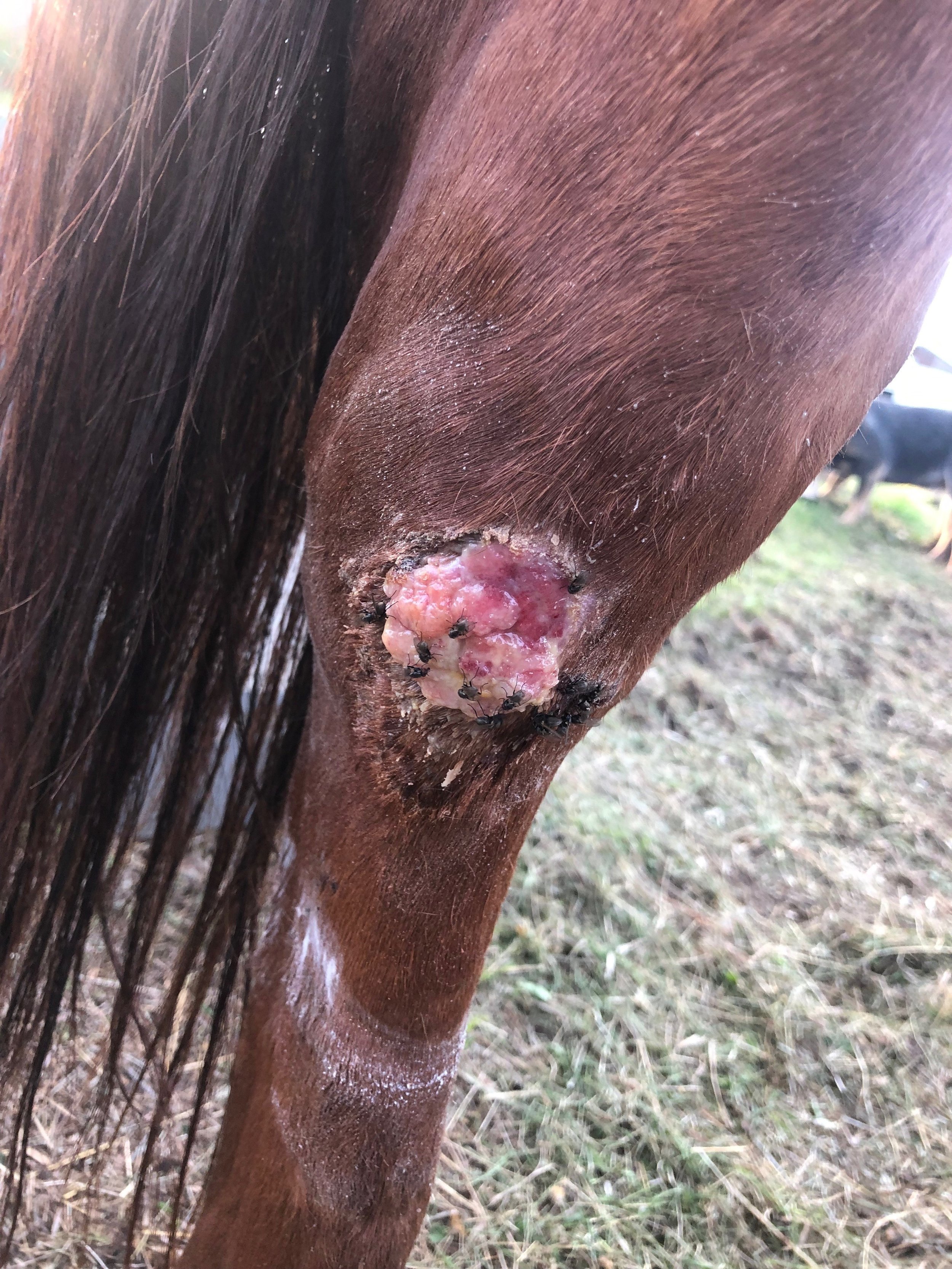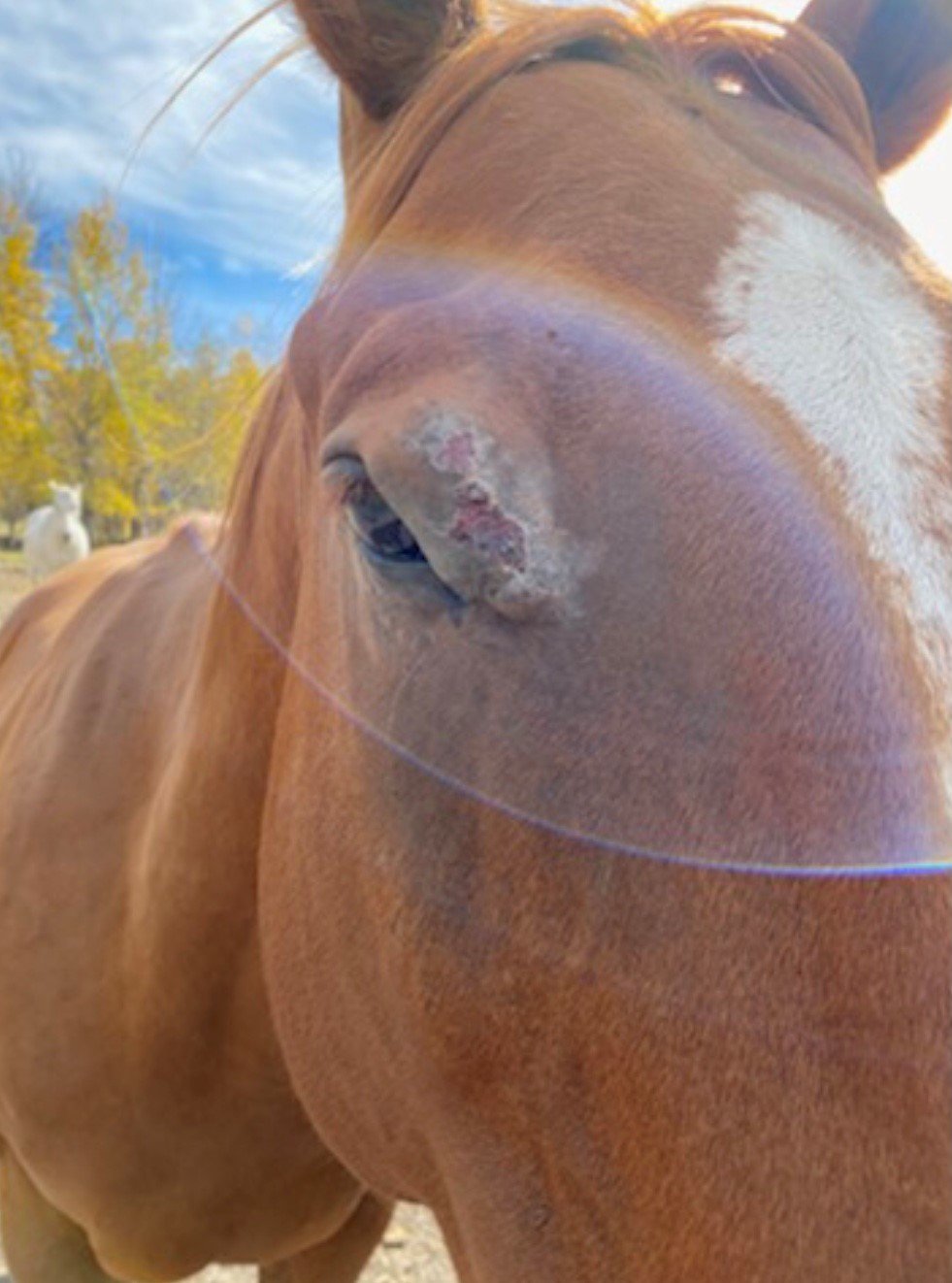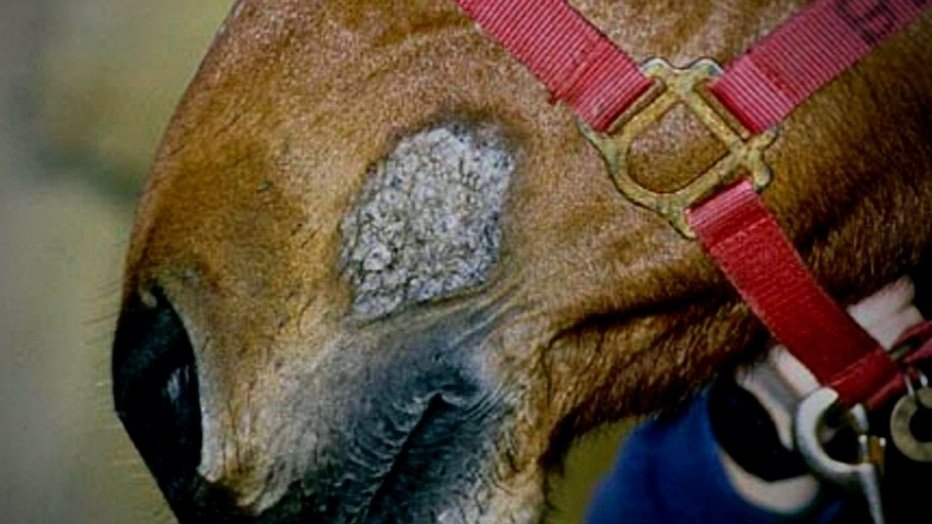Finding the Itch - Common Equine Dermatologic Conditions
Dermatologic (skin) conditions are prevelant throughout the equine species and can effect absolutely any horse, whether they are a performance ahtlete or a pasture pet. There could be a strange-looking bump or bald spot on your horse’s skin that looks harmless and doesn’t seem to bother them, but how do you know if it’s safe to ignore or should be treated? The answer depends on whether the spot or bump in question is caused by a bacterial, fungal or viral infection, an insect bite, sunburn, allergic reaction, bruise, abrasion or any number of other possibilities. The catch is that in order to treat a skin condition effectively you first need to know for sure what it is, and that some issues that stem from completely different causes can look remarkably similar. The good news is that many equine skin diseases and conditions are not very serious and can often be treated easily by a competent owner at home once given the right tools or information from thier veterinarian. Below, we are discussing some of the many dermatologic conditions that you may come across as a horse owner.
Equine Pastern Dermatitis “Scratches” -
image credit: Scratches (etc.) (horsenetwork.com)
Equine Pastern Dermatisis, often reffered to as scratches, is a general term referring to a skin condition that commonly effect the back of the pastern but can spread to the front of the pastern, fetlock and in severe cases, up the canon bone. The condition typically develops when a horse stands in damp or dirty conditions that lessen the integrity of the skin and allow bacteria or fungi to enter. Scratches can affect any breed but is often seen in draft horses whose feathers hold moisture, as well as horses with white legs as thier pink pigmented skin is more susceptible to sun damage, chaffing and abrasions, making it more at risk for infection. The resulting infection can cause redness, swelling, scabbing or crusty, oozing lesions that can make even walking painful for your horse.
The first line of defense when battling scratches is to get your horse to a clean, dry environment. It often requires clipping of the affected area to encourage airflow, cleaning with an antibacterial soap and applying topical treatment geared towards scratches. It can be a very painful condition so often, sedation is useful for the first couple treatments. The prognosis of scratches is best when treated quickly and environmental control plays a large part in reoccurence in previously affected horses.
Equine Sarcoids -
Equine sarcoids are the most commmonly diagnosed skin tumour in equids. Sarcoids can occur as single or multiple lesions in different forms, from small and wart-like to large, ulcerated and fibrous growths. Equine sarcoids are benign and therefore rarely life threatening, however the location and size can cause performance limitations, significant irritation or cosmetic concern. Sarcoids are caused in horses by Bovine Papillomavirus (BPV) 1 and 2, which is detectable and transported by many fly species. However, it appears that the virus typically requires immunocompromised or genetically susceptible horses in ordern for them to be effected by it. In other words, not every horse exposed to the virus will develop sarcoids whereas those that are genetically susceptible or have decreased immunity are likely to develop or continue to develop them. Therefore, at this present time, there is no evidence to suggest that horses affected by sarcoids are contagious to others unless the exposed horse is susceptible.
The fact that there are so many different behaviours and appearances of sarcoids means that there is not one treatment that works for all. Treatment options can range from benign neglect, medications in different forms from topical creams to local injections, surgical removal or an autologous vaccine. A biopsy is completed and sent away for histopathology (lab testing) prior to removal or the vaccine ir order to ensure the skin tumour is confirmed a sarcoid. Anything from the time of year to the presentation to the location or the sarcoid can help your veterinarian decide what the best treatment option is for your specific horse. Price and effectiveness can vary between each treatment option, and one that works well for one horse may not for the next. A single, flat sarcoid may respond to well to topical cream or injection but the autologous vaccine approach is what we have had the best success rate with for multiple, reoccuring sarcoids. The procedure requires atleast one of the sarcoids present to be raised and ulcerated as it requires debulking of the tumour. After debulking, the removed portion will be cut into pieces, frozen with liquid nitrogen and then subcutaneosly (under the skin) implanted into the horses neck, to work like a vaccine. A biopsy must be completed before this procedure and it is typically recommended to be done outside of fly season as some drainage can occur from the incisions in the neck.
Equine Dermatophilosis “Rain Rot” -
Equine Dermatophilosis, otherwise known as rain rot or rain scald, is a common condition during damp conditions, being most prevelant when rain is frequent and humidity is high. While typically easily treated, it can be a serious issue and should be addressed to prevent spread or worsening. Rain rot is a skin infection caused by the pathogen known as Dermatophilus congolensis. The organism can live in the skin quietly until infection is stimulated by sepcific climatic conditions. It then causes an inflammatory infection resulting in hair loss from lesions and scabs along your horse’s skin, particularily along the back, but can be found on numerous areas of the body including the rump, face and legs. Unlike many other skin conditions, areas with rain rot do not typically itch but can be painful and cause your horse to become sensitive to touch. All horses can be affected in the right conditions but often, horses with lighter coat colors as well as horses with compromised or poorly developed immune systems (such as young or older horses) have been found to be at higher risk.
The best prevention for rain rot is keeping your horse dry when in wet environments. Even if it only rained one night, one of the most common causes on rain rot is a wet or even damp blanket being left on a horse and preventing its coat from drying out completely, causing an environment for the bacteria to thrive. Most infections subside in 2-3 weeks and the wounds heal without scarring once the horse is moved to dry conditions. Topical antibacterial shampoo treatment is often effective and may be used along with other topical medications, depending on the severity. Clipping of the hair coat can be helpful and antibiotics are sometimes required in severe cases.
Equine Warts -
Equine warts are small, gray or pink cauliflower-like growths on the skin that can appear singly or in clusters, most commonly on the muzzle or around the eyes but also occasionally on the ears, genitals and lower legs. We have already learned above that Equine Sarcoids are caused by the Bovine Papillomavirus, whereas warts are caused by the similar Equine Papillomavirus, an organism that can survive on skin, equipment and structures for weeks at a time. Horses under 3 years of age are most susceptible to the virus due to thier weaker immune system, however they can appear on adults aswell. The good news is warts are harmless, unless of course they interfere with the horse eating, blinking, moving or are present where tack sits. When left alone, they will typically shrink and disappear over the course of about four months as the young horse’s immune system develops. They can persist a little longer when contracted by an adult. If you are concerned about the appearance or length of time the warts has been present, there are removal or immune boosting options that can be prescribed by your veterinarian. You can prevent the spreading through your herd by isolating the affected horses, making sure they dont share feed, water, tack or equipment or can touch noses with anyone else.
Lice (pediculosis)
Is your horse rubbing and itching to a point of severe aggravation and hairloss? There are two types of lice that can effect horses, chewing lice and biting or sucking lice. Chewing lice (Damalinia equi) feed on sloughed-off dead skin cells; these are more likely to affect the neck, flanks and the base of the tail. Biting or sucking lice (Haematopinus asini) feed on blood; this species prefers longer hair and may be found under the forelock and mane, the tail and on the pasterns of long-feathered horses. Both types cause skin irritation and itching. Lice are not only extremely uncomfortable for the horse and cause general poor doing, but an infestation of biting or sucking lice can cause anemia and should be treated immediately by a veterinarian. The itching can also cause a horse to rub on fences or trees and cause secondary abbrasions and infections. Lice treatment can often be provided to be given at home, with the amount of treatments dependant on the severity of infestation. If you think your horse has lice, flattened insects up to two to four millimeters long may be visible if the hair is parted and the skin examined in good light. Pale, translucent eggs may also be attached to nearby hairs. If no lice are immediately visible, it can still be suspected by a poor hair coat and general poor doing.
Lice can be passed between horses, as well as from equipment or blankets. Affected horses should be isolated as well as any horse that had been exposed to them before diagnosis. Eggs that detach from the horses coat can later hatch and cause a re-infestation, so be sure to complete all required treatments and clean/disinfect any tack thoroughly.
Your horse’s skin is his first line of defense against bugs and other microbes, so they will most likely experience their fair share of minor conditions over the course of their lifetime. By learning what to do, what not to do, and when to call the veterinarian, you can do your part to keep his skin healthy and strong.









